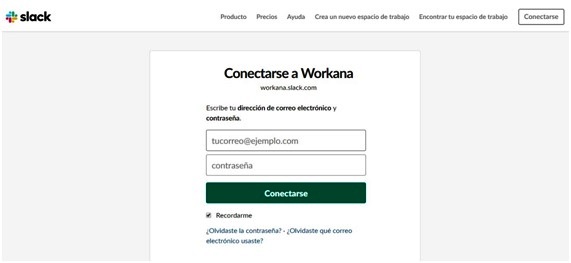In our hyperconnected world, one word can open the door to a new experience or close it forever. Similarly, in a digital product, words can be like a helping hand that leads us through it, finding shortcuts and solving problems. But if misused, words can confuse and even cause the most convinced customers to flee.
UX Writing is the art of crafting the texts and spoken language oriented to guide, delight and retain the users of a digital product. And ultimately, of scaling our business, as it allows us to convert new customers. This new area of expertise has become an essential pillar for the success of any brand. The concept defines the use of text and the spoken word in User Interfaces, with three specific objectives:
- Help users advance in the use of the product to solve a need
- Improving the User Experience
- Strengthening a brand’s positioning, tone and voice
How did UX Writing break out as a new discipline? What does it consist of, and what are the strategies it relies on to achieve such objectives? In this article we tell you the details of this new trend, so you can assess what skills you need to develop to become a UX Writer.
A new Content writing area empowering words

UX Writing as a process has always existed, but for many years it was done in the final stage of designing a digital product. However, in the last decade, some pioneers such as YouTube and Xbox discovered that communication with their users was inconsistent, as the tone and voice varied greatly between mobile devices and web platforms.
The figure of the UX Writer emerged with this mission: to analyze the product’s voice in a transversal way, to give it the same tone and style of communication in all its UIs. Over time, it became crystal-clear that UX Writing is also a pivotal piece to attract, retain, convert customers and promote the usability of a digital product.
The Global User Experience: UI + UX
When we use an application or browse a website, we seek to solve a need or problem in the most straightforward and user-friendly way as possible. If addressing our need goes hand in hand with a pleasant experience, we are very likely to come back and recommend it to others.

The elaborate process in which a digital product (What), a need (For What) and usability (How) intertwine, is called User Experience (UX). There are several factors involved in UX:
- The User Interface (UI) defines those sensory channels and controls that allow interaction between a user and a machine. An excellent User Interface will favor a fast, intuitive and smooth navigation.
- The User Interface Design (UI Design) aims to develop a relevant digital product (that solves a need), usable (easy to use), and pleasant (that adds value and conquers the esteem of our user).
Yet, a feature overlooked or neglected for quite a long time was the conversational aspect between user and product. In short, the words that help us progress along the entire flow to complete a task or solve a problem.
UX Writing is precisely the area focused on the words which live in the user interfaces. It promotes the usability of our digital product attending to meet the goals of our customers and the business.
The starry comeback of words
In December 2019 an expert and pioneer in UX Writing, Torrey Podmajersky, gave a lecture in New Zealand, which was the occasion to go over the strategic elements of UX Writing.
The microcopy, the track to drive the user (and convert customers)
We call the texts used in a User Interface microcopies because they are short and serve as clues to lead the user across the flow of a product. A microcopy must meet two requirements to be functional:
- it must promote usability
- it must stay true to the brand’s voice.
Slack provides concise, organized, user-friendly and agile user-guidance:

Usability
Users’ permanence and progress will highly depend on the microcopies to guide him being :
- Understandable: for users of any geography and language, and easily readable.
- Concise: each word must have an objective and promote action.
- Conversational: interact with users, just like in a conversation, using the vocabulary of our audience.
- Clear: the order of instructions must follow an easily understandable logic. For example, tutorials on using the application must be visible. An error message should redirect the user and appeal to humor to minimize frustration.
Slack: Slack addresses users friendly by welcoming them with the twists of the local language (in this case, Latin American people: “¿Olvidaste qué correo electrónico usaste?”).

A typical irritating error message: it does not explain the reason nor redirect the user.

Staying true to the voice of our brand
Addressing our users with the distinctive sound of our brand is essential for a meaningful experience. The way we name our users, the vocabulary we use, grammar, punctuation details, and the use of capital letters must be articulated with the brand concept we wish to strengthen.
- Netflix: personalized user experience by 100%. The profile image with freckles feeds the algorithm to give you movie options.

- Amnesty International’s Home page gives particular relevance to the use of Cookies, very much in line with its defense of human rights, such as privacy.

How do UX Writers work
Today, UX writers work as a team with Product Managers, designers and engineers, and are present throughout the development process of new product features. Their input is vital from ideation to implementation of user flow.
Some tasks that a UX Writer performs are:
- In-depth audience research to get an insight into the final users of a digital product and understand how it solves a real need.
- Acquire a global and detailed vision of the digital product to ensure a consistent user experience throughout the flow.
- Craft the microcopies respecting the voice of the brand, with a style and tone appropriate to the end-user
- Anticipate how UI words will work when translated into other languages, planning the changes needed to avoid style, tone and grammar problems.

Strategies for Upskilling in UX Writing
UX Writer’s work is compatible with many professions. Technical or content marketing writers, teachers, journalists, designers and database analysts can all become excellent UX writers.
Whether we aim to upskill or reskill to work as UX Writers, it is crucial to take into account the essential skills needed to perform this task:
- Language skills: the ability to express oneself with words, to be synthetic, to search for synonyms and to present different variants of the same message are essential to engage in UX Writing. Mastering several languages is a powerful ally to have a more comprehensive view of the user profile.
- Empathy towards users: learning who the final users of a product are, defining the Buyer Persona, what their problems and needs are, what vocabulary they use, how they communicate between peers and what things they hate are essential to align communication properly.
- Collaborative spirit: a UX writer is a piece of a multidisciplinary team that brings together Product Managers, Developers, Data Scientists and Designers. The contribution of all team members will be vital to achieving a satisfactory user experience consistent with the business objectives.
- Coding: The notions of programming are a significant plus for a UX Writer. Knowing how to modify strings (any line of text that appears in the UI) allows you to change a term in all the code, correct commas, typing and grammar errors and a thousand other details. By doing this, you get more control over the product.

If we are working in a start-up or a team with a limited structure, knowing how to code will avoid referring problems to the team’s developers, who always have a long list of priorities to solve. Besides, this will raise our profile as a UX writer: developers will see us as a closer colleague and will come to us to resolve content issues. A UX writer with some mastery of the code will gain greater visibility and improve the team’s performance.
There are many free podcasts, blogs and online courses available to train on UX Writing: UXWritersCollective and DailyUXWriting are some options. If you want to gain experience in the area, joining a community of freelancers, like Workana, will allow you to tackle projects to unfold your full potential as a UX Writer.
—
You might also be interested in:





